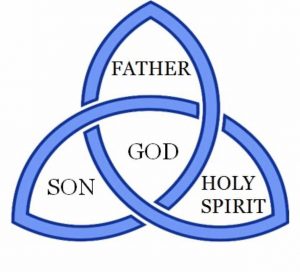REFLECTION: FEAST OF THE BLESSED TRINITY

The doctrine of the Blessed Trinity was defined in two stages, firstly at the Council of Nicaea in 325 AD and later at the First Council of Constantinople in 381 AD, but this feast is less about the doctrine of the Trinity and more about the reality of the Trinity. It’s a feast that speaks to us of the wonder of our God who is a Father who loves us, a Son who walks with us and a Holy Spirit who guides our way. Every time we come to pray, we invoke the names of the Three Persons. The figure three features prominently in the New Testament. It symbolises completeness and it reappears right throughout the life of Christ. There were three people present in the stable of Bethlehem, Jesus, Mary and Joseph, and their earliest visitors there were the three wise men. When Jesus went into the desert before His public ministry He was tempted three times by Satan. We find the number three in His parables also. ‘The Prodigal Son’ is a story about a father and two sons. The parable of ‘The Good Samaritan’ contains reference to three people who passed by on the road. The ‘Sower’ sowed seed in three different types of terrain, yielding three different levels of harvest. Then during His Passion Peter denies him three times. He falls three times on the Hill of Calvary, and He dies between two thieves. After His death He spent three days in the tomb. The figure three, then is deeply significant, the symbol of completeness and perfection. It helps us to appreciate more clearly that the Blessed Trinity is the perfect community, the fullness of love. We are privileged to be invited to share in the hospitality of that community. We are, in the words of St. Teresa of Avila, ‘constantly in the gaze of the Trinity’, and consequently, every Sunday is Trinity Sunday. Glóir don Athair agus don Mhac agus don Spiorad Naomh.
